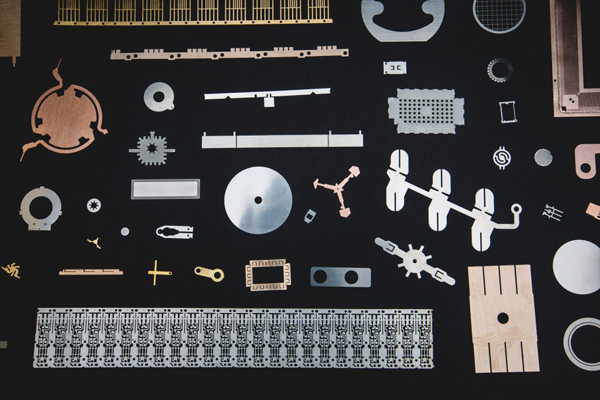
Etching is a technique that creates a pattern or text on the surface of a material, which is widely used in a variety of fields, such as art, craft manufacturing, and the electronics industry. During the development of etching techniques, a number of different types and styles have been developed. Among them, the two main types that are most common are chemical etching and physical etching.
Chemical etching, as the name suggests, utilizes the principle of chemical corrosion to form patterns or text on the surface of a material. This method of etching usually involves the use of specific chemical reagents or solutions that are capable of reacting chemically with the material being etched to form the desired shape or structure on its surface. The advantages of chemical etching are that it is highly accurate, can create very detailed and intricate patterns, and is relatively inexpensive for mass production. However, it also has some limitations, such as being more selective of materials, not all materials are suitable for chemical etching; at the same time, the waste liquid generated during chemical etching needs to be properly disposed of so as not to pollute the environment.
Physical etching, on the other hand, is the formation of patterns or text on the surface of the material by physical means. This etching method usually use mechanical force, laser, electron beam and other physical energy, directly on the surface of the material, so that it produces etching effect. The advantage of physical etching is its high flexibility, which can be adapted to different materials and different shapes of surfaces; at the same time, since it does not require the use of chemical reagents, it has less impact on the environment. However, physical etching usually requires higher technology and equipment costs, and is more difficult to operate; moreover, in some cases, physical etching may not be able to achieve the same degree of fineness as chemical etching.
In practice, chemical etching and physical etching each have their own unique applications and advantages. For example, in the electronics industry, chemical etching is often used to create circuit patterns on circuit boards; while in the production of artwork, physical etching can create a unique texture and texture, enhancing the artistic expression of the work. In addition, with the progress of science and technology and the development of processes, these two etching methods are also constantly fused and innovative, the emergence of many new etching techniques and processes.
However, both chemical etching and physical etching need to be selected and adjusted according to specific application scenarios and material properties. When selecting etching methods, factors such as the chemical properties, physical properties, and surface structure of the material need to be considered, as well as factors such as the complexity of the desired pattern, precision, and cost. At the same time, it is also necessary to pay attention to the safety and environmental protection issues in the etching process to ensure that the operation process complies with the relevant regulations and standards.
In general, chemical etching and physical etching as the two main types of etching technology, each with unique characteristics and application areas. In practical application, it is necessary to choose and apply according to the specific situation in order to achieve the best etching effect. In the future, with the progress of science and technology and the development of technology, etching technology will continue to innovate and improve, providing more possibilities for the development of various fields.
Although the above content has been more detailed introduction of chemical etching and physical etching of the basic characteristics and application areas, but it is worth noting that the two etching technology in practical application is not isolated, but often complement each other, combined with each other. For example, in some complex etching tasks, may first use physical etching for rough processing, and then use chemical etching for fine processing; or in some special materials, may need to combine the advantages of the two etching technologies to achieve the desired etching effect. Therefore, in the actual application, should be based on the specific needs and conditions of flexible choice and application of the two etching technology.
In addition, with the continuous development of science and technology, new etching technologies and methods are also emerging. For example, in recent years the rise of laser etching technology with its high precision and high efficiency has been widely used in many fields. Therefore, for the research and application of etching technology, it is crucial to keep an open and innovative attitude. Through continuous exploration and practice, we can discover more new etching technologies and application methods, providing strong support for the development of various industries.
In summary, chemical etching and physical etching, as the two main types of etching technology, have their own unique features and application scenarios. In practical application, we need to choose and apply according to specific needs and conditions, and constantly explore new technologies and methods to meet the changing needs.
Contact: andy_Lai
Phone: 18938693450
E-mail: yw9@zldsmt.com
Add: Building A3, Huafa Industrial Park, Fuyong Town, Fuyuan Road, Fuyong Town, Baoan District, Shenzhen,China